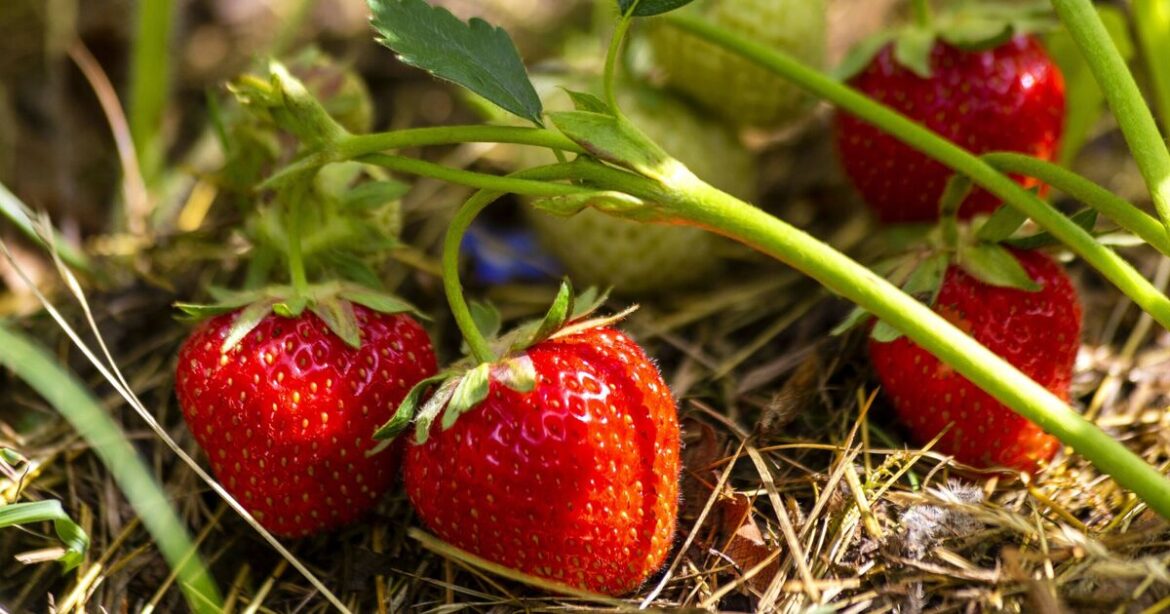There’s something special about picking homegrown fruits and vegetables from the garden knowing they are completely organic and a product of your own hard work. But growing seasonal favourites like strawberries at home comes with its challenges, particularly how big and juicy the fruit turns out to be. In a perfect scenario, strawberry plants would produce plump red berries with a slight firmness and sweet flavour.
And it is doable if gardeners fulfil a few fundamentals of gardening, notes Luke Newnes, a gardening content creator and a member of the Interior Squad at Hillarys. He explained that while it’s “on the late side” for planting new strawberries, there are plenty of ways for gardeners to boost the ones they do have growing.
Luke notes that early spring is the “golden window” for planting strawberries because that’s when they strawberries settle in, stretch out their roots, and prepare for a bumper crop. By the end of May, the soil is warmer and the days are longer which can stress young strawberry plants.
“But don’t worry, you haven’t missed the boat entirely”, said Luke. He explained that while it’s a bit late for a bumper summer crop, containers and raised beds can still welcome strawberry plants because you can control the soil.
He said: “Keep things consistently moist and even move your plants to catch the morning sun while dodging that harsh afternoon heat.”
That’s not all. For both established and young strawberries, Luke shared five fundamental gardening jobs everyone should be doing.
1. Rich soil
Strawberries need frequent watering when young to help establish a strong root system, but plants can quickly become waterlogged and rot if gardeners over-do it. It’s why soil is so important, said Luke.
“Give your strawberries rich, well-draining soil with plenty of compost for the tastiest juicy strawberries”, he urged.
Rich soil has a better ability to hold water, which is essential for healthy growth, especially during dry spells. It is also packed with essential nutrients like nitrogen, phosphorus, and potassium, which encourage strong plant growth, abundant flowering, and healthy fruit development.
2. Mulch
Mulching has many benefits for lots of different plants, not just strawberries. But it is particularly effective in this case because mulching the the soil surface helps to deter weeds, hold in moisture and keep the fruit off damp ground, so they stay clean and dry and are less likely to rot.
Straw is recommended for mulching strawberries. Simply spread a thick layer around the plants before they start fruiting.
3. Lots of sunlight
Container-grown strawberries can be easily moved to ensure they have the right growing conditions, which includes lots of sunlight. Luke said: “Make sure they get at least six hours of sun a day—more if you can manage it.”
4. Consistent watering
As mentioned previously, strawberries are thirsty plants, especially when they are young. Consistent watering is key to ensure plants are healthy but take care not to overwater them.
Plants in containers need regular watering whatever the weather, as the small amount of compost dries out very quickly.
Avoid soaking the crown (centre) of the plant or the fruit when watering strawberries as this can lead to fungal problems, especially grey mould. Water in the mornings rather than the evening so plants have plenty of time to dry out if they are splashed.
5. Plant feed
Luke notes that feeding is very important for juicier strawberries, so they should be treated similarly to tomatoes. He said: “Feed them every few weeks with a balanced fertiliser and, if you see runners (those long stems reaching out to start new plants), pinch them off so your plants put all their energy into fruiting.”

